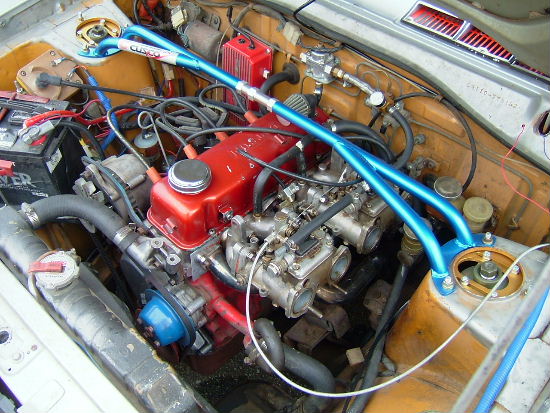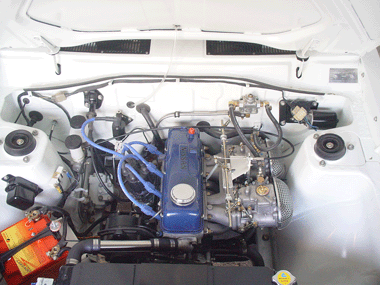Many use simple screens over the carburetor, which keep large objects out of the engine. This or no screen provides the fullest "awesome sidedraft sound", but at the expense of increased engine wear. For filtering, the easiest thing is sock filters, but all sorts of regular and remote filter can be used.
Contents |
Overview
Focusing on Weber DCOE carburetor, Dellorto DHLA and Mikuni PHH.
Also see: Hitachi Twin Carb (SU-type) air filter
No Filter
At the expense of increased engine wear, using no filter or air horn allows LHD Sidedrafts.
Air Horns
Air horns provides the fullest "awesome sidedraft sound" and also a performance boost (the length can be changed to match the desired power peak).
A velocity stack (air horn), is a trumpet-shaped device of differing lengths fitted to the air entry of an engine's carburetor. It is designed to:
- Allow smooth and even entry of air at high velocities into the intake tract with the flow stream adhering to the pipe walls known as laminar flow.[2]
- Modify the dynamic tuning range of the intake tract by functioning as a resonating pipe which can adjust the frequency of pressure pulses based on its length within the tract.
Screen
Screen is simple mesh covering over the air intake. It only prevents large objects from entering the engine.
Sock Filter
Air Cleaner
Traditional paper or foam-covered paper air filter.
Box Filter
N13 Filter
For an overview of modifying the Pulsar air box, see Air Cleaner#N13.

![[Datsun 1200 encyclopedia]](/wiki/upload/wiki.png)




















